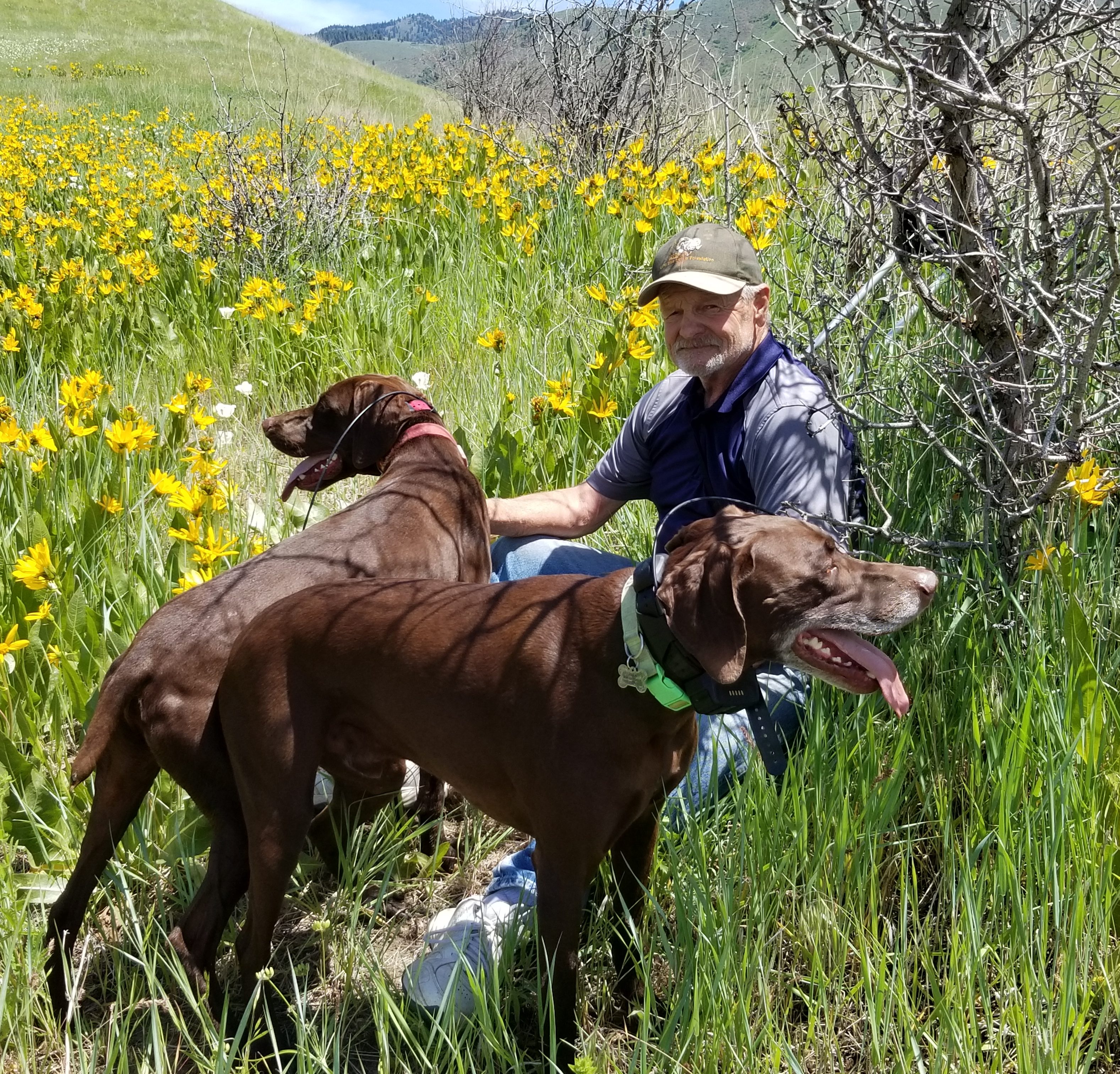Although I don’t like to dwell on bad news, I feel I still need to pass it along. First off on the bad news is fires. We know it’s going to happen, but we hope that there is little impact on wildlife. Today there is a wild fire burning north of Vale Oregon. It grew to 40,000 acres very quickly with the heavy abundance of vegetative growth from our wet Spring. The potential for bad fires is definitely out there this year. It’s drying our fast. The positive note might be that the fire districts are aware of the potential and have geared up and are ready to get on the fires quickly. A second positive note is that everyone is aware of the fire danger and might be more cautious than normal.
Another bit of bad news is the cheat grass. It’s something we put up with every year but this year is even worse. In over thirty years of keeping records I have never seen the grass as tall as it is. I’m sure we’re going to see a lot more cheat in the eyes and ears of our canine pals. The cheat grass height Is about head high for most chukar dogs this year. A friend of mine, Steve, has already had to deal with cheat in his dogs eyes. As he told me, make sure you have some eye solution and cotton swabs to remove the cheat before it can do some damage.
Okay, enough of the bad stuff. I finally got out and found some good news to report on. Because of the diesel prices I’m not venturing as far from my house in search of chukar. But their close relatives, Hungarian partridge and California quail do well within a short distance from my house. Me and the dogs took a short drive today and found some birds. Our first sighting of babies were quail. About a dozen chicks sprinted across the dirt road accompanied by mom and pop. They were about the size of large bumble bees so they weren’t too old. I also saw several pair of quail along the drive and am hopeful that within the next month they also will have chicks.
My best sighting was Hungarian partridge. I’ve been over this route several times over the last month but the grass is so tall the only way you can see a bird is if they are on the road and they weren’t. Today wouldn’t have been any different except that the ranchers finally got their first cutting. I spotted a hun between the wind rows.

Two little ones were with her. I was a little disappointed to only see two chicks. I walked out in the field to get a better look and was pleasingly surprised to have about ten to fifteen chicks take flight with two adults. They flew at least 100 yards and I guessed the birds to be about four to five weeks old. That would have put the hatching date somewhere in the area where we had all the rain. They seemed to have weathered just fine. I stepped over the next two wind rows and had a hen faking crippled. I saw a half dozen or so chicks dive into the wind row. They were less than a week old and there might have been more birds that I didn’t see. Looking through the hay did me no good. The chicks were well hidden while mom was trying to get my attention. That hatch was way after the rains but to early to be a second hatch.
A little further down the road I decided to let the dogs run through a different downed hay field. While they were running far ahead of me I jumped another pair of huns with chicks flying with them. These chicks were also about four weeks old and they numbered around ten.
As we turned onto my dirt driveway a quail with chicks in tow ran across the road. It’s the earliest I’ve ever seen quail chicks here.
So, the good out weighs the bad in my opinion. In just one trip I have become very optimistic on the first hatch. I know that it takes more than just one day like this to make a prediction but I’m getting some good vibes.

Do you think there was enough rain to fill some/most of the dirt tanks?
LikeLike
We had steady rain like I haven’t seen before. Most every hole that could hold water was full. Just a few days ago I found three yearling elk playing in a pond above the house that is usually empty by now. I’m sure in another month or so it’ll be evaporated out. There are creeks still running that are usually dry by the first of June. We did have some epic rainfall in May and the first week in June.
LikeLike
Terrific….like you point out, the negative impact of rain on a hatch may be compensated by better cover and widespread water and plentiful insects.
LikeLike